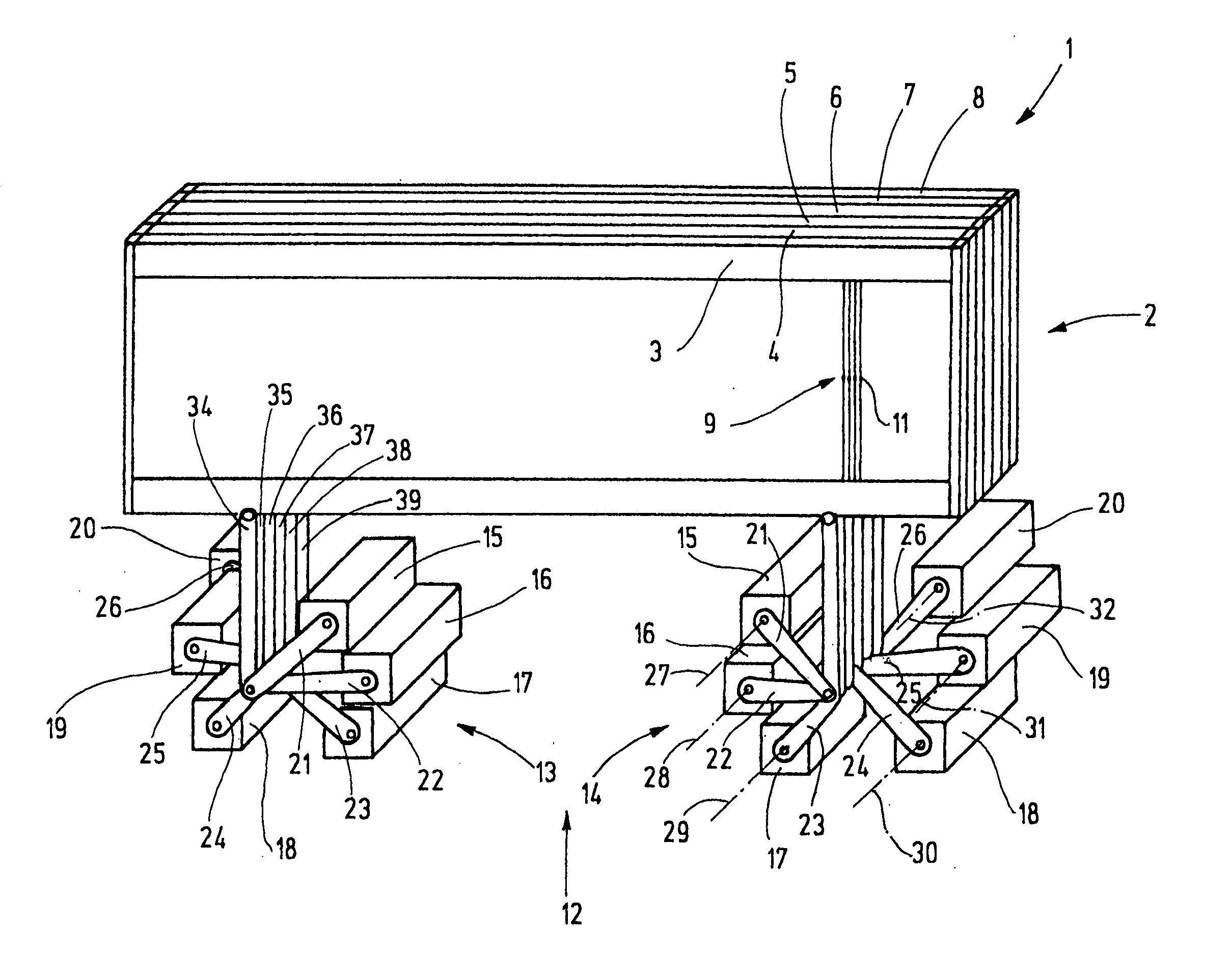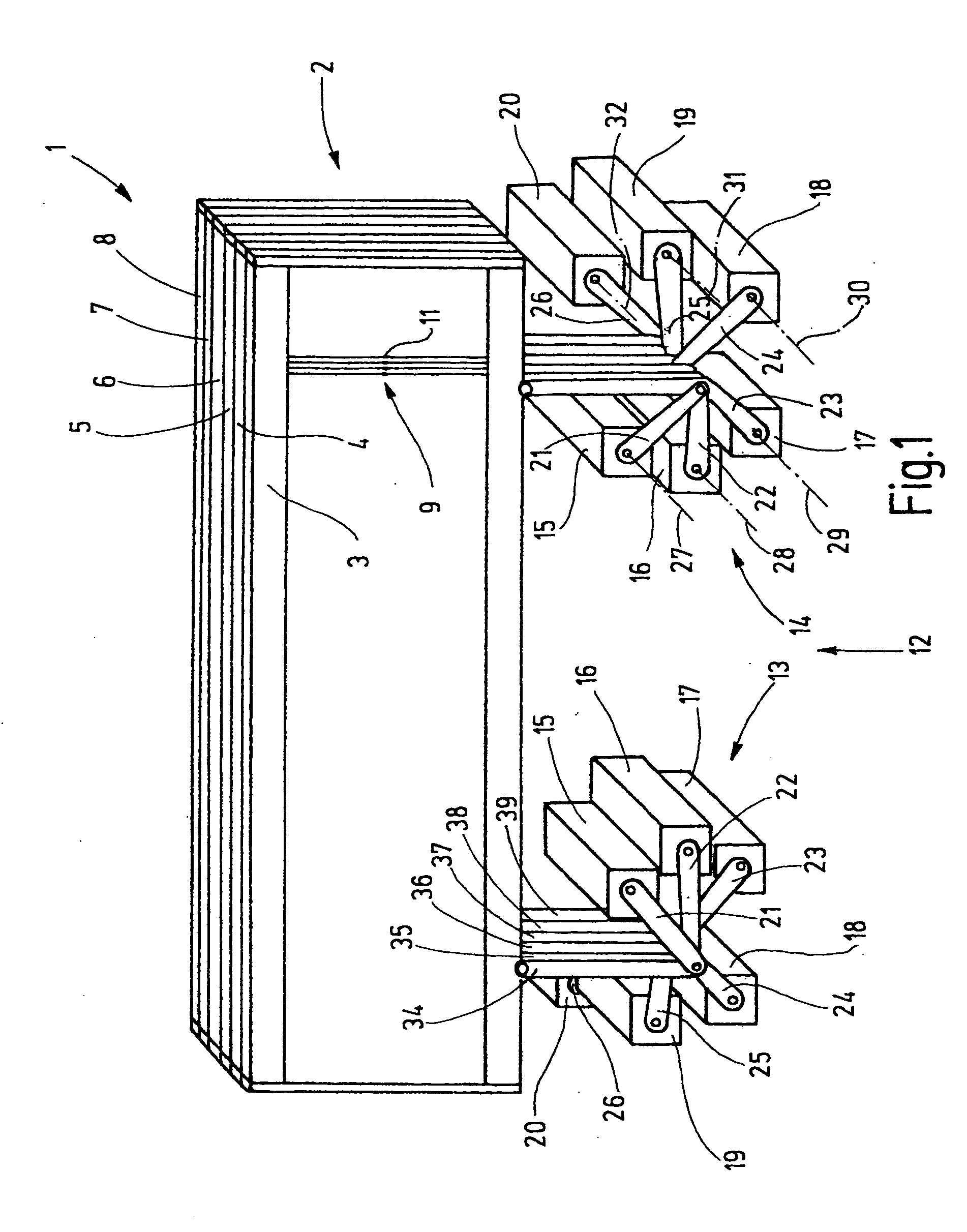Transport for a swap body
a technology of swap body and forming device, which is applied in the direction of electric controllers, dollies, textiles and papermaking, etc., can solve the problems of compact space-saving design and short force transmission path, and achieve the effect of low intrinsic moment of inertia and high shaft acceleration
- Summary
- Abstract
- Description
- Claims
- Application Information
AI Technical Summary
Benefits of technology
Problems solved by technology
Method used
Image
Examples
Embodiment Construction
[0028] In FIG. 1, a shed forming device 1 is shown, to which twelve heddle shafts 2 belong. Of these, six heddle shafts 3 through 8 are shown in FIG. 1. The heddle shafts 2 are each formed by a rectangular frame with an upper and a lower, typically horizontally located, shaft rod. The ends of the shaft rods are joined together by so-called side struts. The heddle shafts 2 serve to guide and support heddles 9, whose ends are seated on heddle slide bars that are not shown further. The heddles 9 are low, flexible metal elements, each with at least one yarn eyelet 11 for guiding the warp yarn. The heddles 9 are preferably seated with some longitudinal play (vertical play) on the corresponding heddle slide bars. If a heddle shaft 3 through 8 is guided upward or downward (that is, is adjusted in the longitudinal direction of the heddles) while the other heddle shafts remain in the same place, a shed is created, into which a weft yarn can be inserted (weft insertion).
[0029] The heddle sha...
PUM
 Login to View More
Login to View More Abstract
Description
Claims
Application Information
 Login to View More
Login to View More - R&D
- Intellectual Property
- Life Sciences
- Materials
- Tech Scout
- Unparalleled Data Quality
- Higher Quality Content
- 60% Fewer Hallucinations
Browse by: Latest US Patents, China's latest patents, Technical Efficacy Thesaurus, Application Domain, Technology Topic, Popular Technical Reports.
© 2025 PatSnap. All rights reserved.Legal|Privacy policy|Modern Slavery Act Transparency Statement|Sitemap|About US| Contact US: help@patsnap.com



